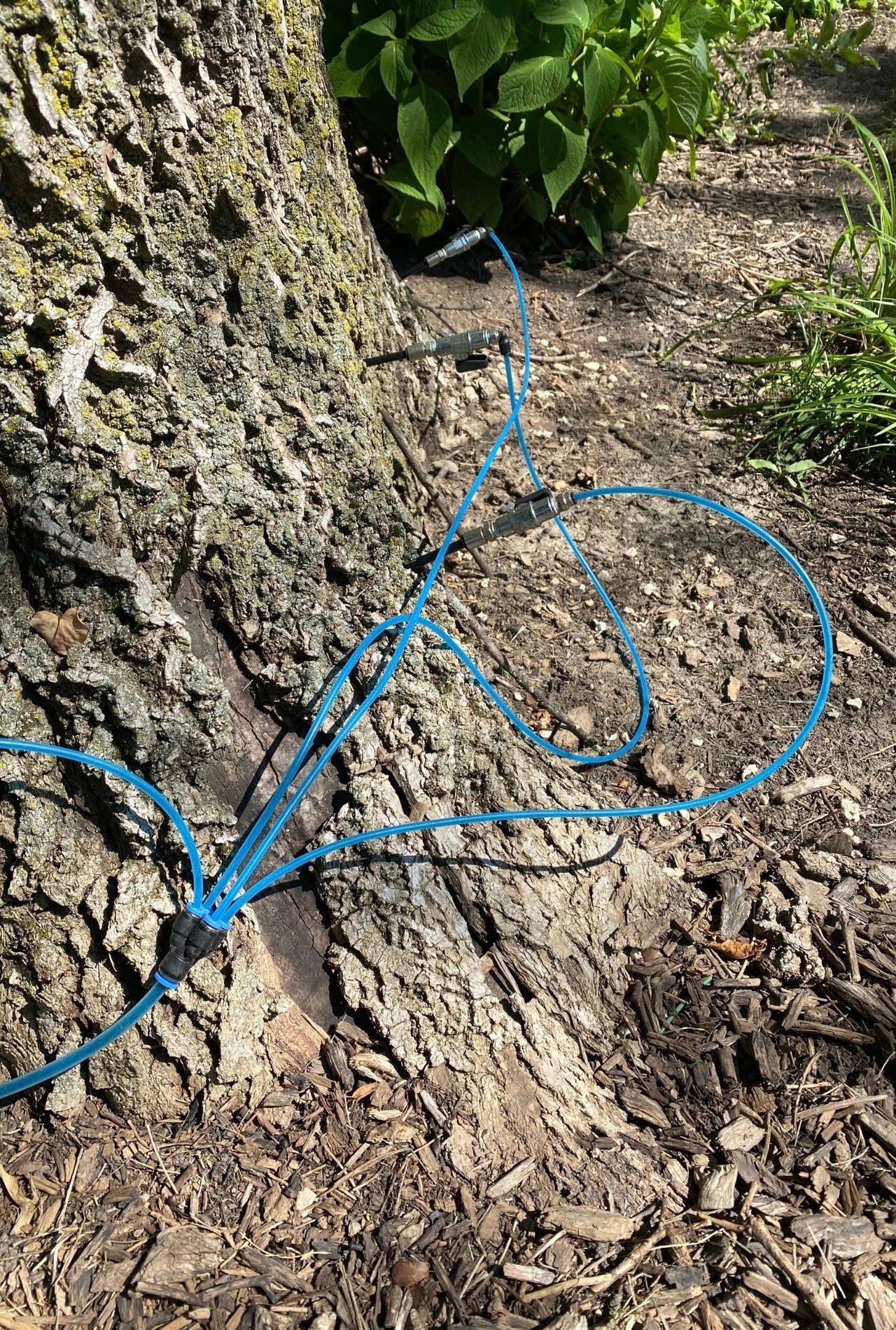Emerald Ash Borer
Welcome to our comprehensive guide on Emerald Ash Borers (EAB) and the crucial role of plant healthcare treatments in preserving the health and vitality of ash trees. Emerald Ash Borers, an invasive beetle species, pose a significant threat to ash tree populations, causing widespread damage and mortality. In this guide, we'll delve into the characteristics of EAB, the symptoms of infestation, and the essential plant healthcare treatments to safeguard your ash trees.
What Is An Emerald Ash Borer?
Identification
The Emerald Ash Borer (Agrilus planipennis) is a metallic green beetle native to Asia. It was first identified in North America in 2002 and has since become a major pest for ash trees (Fraxinus spp.). Adult beetles are approximately half an inch long with distinctive emerald green coloration, making them easily recognizable.
Life Cycle
Emerald Ash Borers undergo a complete metamorphosis, progressing through egg, larval, pupal, and adult stages. Adult beetles lay eggs on the bark of ash trees. Upon hatching, larvae bore into the tree, feeding on the inner bark and disrupting nutrient transport.
Damage and Impact
The feeding activities of EAB larvae disrupt the tree's ability to transport water and nutrients, leading to dieback of branches and eventually tree mortality. Infestations can go unnoticed until significant damage has occurred, making early detection and intervention crucial for effective management.
Stay Proactive With Our Emerald Ash Borer Plant Healthcare Services
Investing in our Plant Healthcare Services for Emerald Ash Borers is a proactive step in preserving the health and longevity of your ash trees. Whether you have a single tree in your backyard or manage a community landscape, our certified arborists are ready to collaborate with you. Contact us today to schedule a consultation and take decisive action in protecting your ash trees from the threat of Emerald Ash Borers.
What Are Symptoms of an Emerald Ash Borer Infestation?
Our Arborists Will Help You Prevent and Identify Emerald Ash Infestations
Canopy Dieback
Infested ash trees often exhibit canopy dieback, with the upper branches showing signs of declining health. Dieback occurs as a result of disrupted nutrient flow caused by larval feeding.
Epicormic Shoots
In response to stress, ash trees may produce epicormic shoots, also known as water sprouts, along the trunk and branches. These shoots indicate the tree's attempt to compensate for damage.
D-Shaped Exit Holes
Adult Emerald Ash Borers create distinctive D-shaped exit holes when emerging from the tree. These small exit holes are a key diagnostic feature and signify an active infestation.
Serpentine Galleries
Larvae create serpentine galleries under the bark as they feed. These galleries disrupt the flow of water and nutrients, causing progressive damage to the tree's vascular system.
Plant Healthcare Treatments for Emerald Ash Borers
Insecticidal Treatments
Insecticidal treatments are a vital component of plant healthcare for ash trees in EAB-prone areas. Systemic insecticides can be applied to the soil around the base of the tree or injected directly into the trunk. These treatments are designed to be absorbed by the tree, providing protection against Emerald Ash Borers as they feed on the inner bark.
Soil Drenches
Soil-applied insecticides can be administered as drenches around the base of the ash tree. The insecticide is absorbed by the roots, translocating throughout the tree to provide protection against EAB larvae. Soil drenches are effective for trees that may be too large or difficult to treat with trunk injections.
Trunk Injections
Trunk injections involve directly injecting insecticides into the trunk of the ash tree. This method ensures the targeted delivery of the treatment to the tree's vascular system, providing systemic protection. Trunk injections are often preferred for their precision and minimal impact on non-target organisms.
Biological Controls
Biological control methods involve the introduction of natural predators or parasitoids to manage Emerald Ash Borer populations. This approach aims to establish a balance in the ecosystem, reducing the impact of EAB. Research and ongoing studies are exploring the potential of using parasitoid wasps, which attack EAB larvae, as a biological control measure.
Integrated Plant Healthcare Programs
Monitoring and Early Detection
Regular monitoring of ash trees is crucial for early detection of Emerald Ash Borer infestations. Certified arborists and plant healthcare specialists can conduct thorough inspections to identify signs of EAB activity. Early detection enables prompt intervention, increasing the likelihood of successful treatment outcomes.
Tree Health Assessment
Comprehensive tree health assessments are essential for developing tailored plant healthcare programs. These assessments consider factors such as soil health, nutrient levels, and overall tree vigor. A holistic approach to tree health ensures that the underlying conditions supporting tree vitality are addressed.
Resistant Tree Varieties
Planting resistant tree varieties is a proactive measure in regions susceptible to EAB infestations. Some ash tree cultivars exhibit increased resistance to Emerald Ash Borers and may be less prone to severe damage. Planting a diverse range of tree species can also contribute to overall landscape resilience.
Community Awareness and Education
Community awareness and education programs play a vital role in EAB management. Informing residents, property owners, and local authorities about the threat of Emerald Ash Borers encourages collective action and adherence to best management practices.
Why Choose Our Plant Healthcare Services for Emerald Ash Borers
Certified Arborists and Expertise
Our team consists of certified arborists and plant healthcare specialists with extensive knowledge of Emerald Ash Borers, their life cycle, and effective treatment strategies. Certification ensures that our team adheres to industry best practices and stays informed about the latest advancements in plant healthcare.
State-of-the-Art Treatment Methods
We employ state-of-the-art treatment methods, including trunk injections and soil drenches, to deliver targeted and effective solutions for Emerald Ash Borer management. Our approach integrates the latest research and technologies to provide optimal results.
Customized Treatment Plans
We develop customized plant healthcare plans based on the unique needs of each ash tree and the specific conditions of the landscape. Tailored treatment plans consider factors such as tree size, soil composition, and the extent of EAB infestation.
Transparent Communication
Clear and transparent communication is fundamental to our plant healthcare services. We keep clients informed about the status of their ash trees, treatment options, and ongoing care practices.Education is an integral part of our approach, empowering clients with knowledge about plant healthcare and proactive measures they can take to support the well-being of their ash trees.
Emerald Ash Borer FAQ
Frequently Asked Questions About Emerald Ash Borer Infestations




